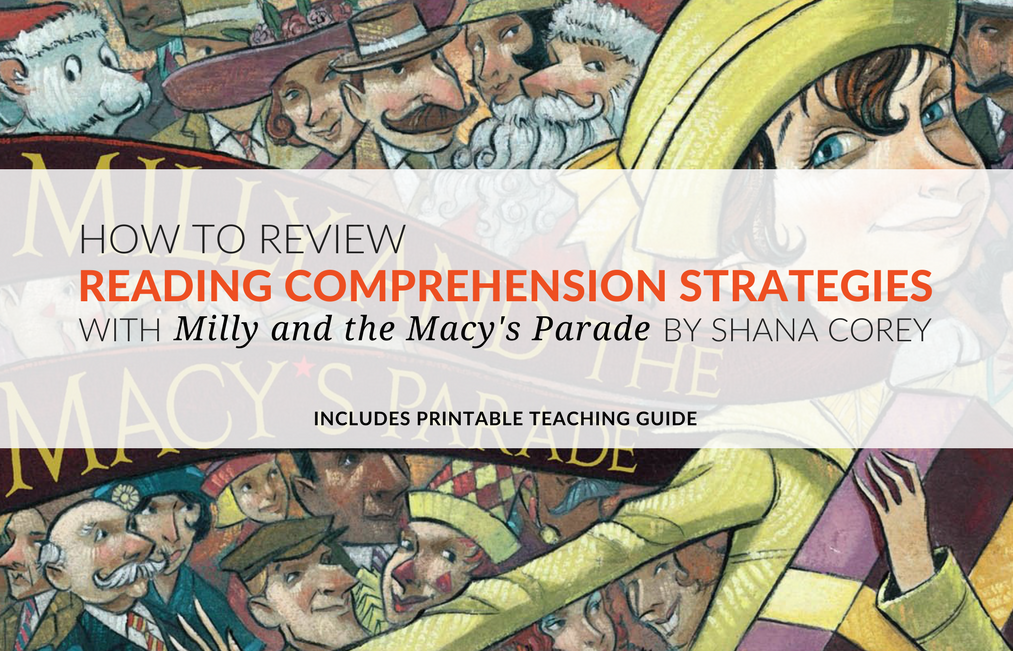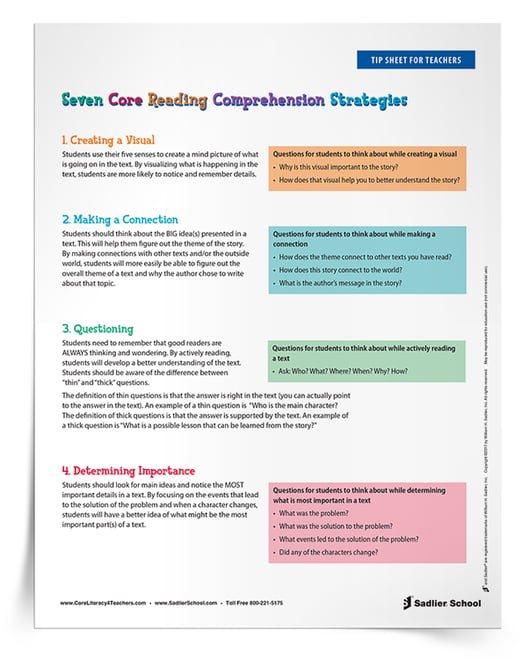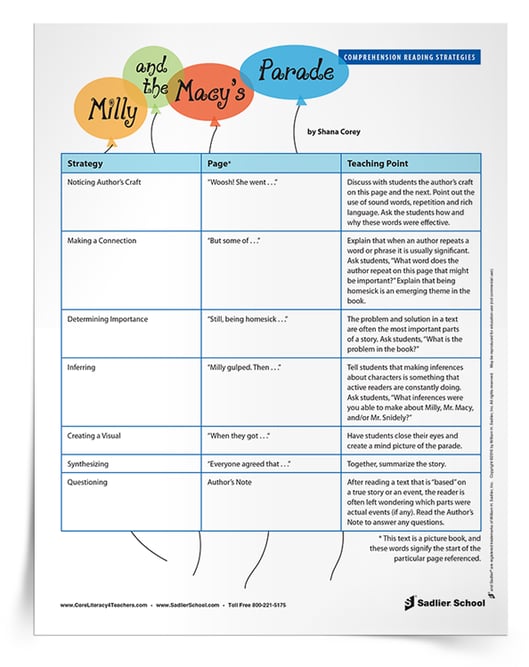November 15, 2017 CL Seasonal Activities Fall, CL Lesson Plans, ELA K-5, ELA Focus - Reading, ELA Seasonal - Fall, ELA Resources - Activities, Core Literacy
Thanksgiving Reading Comprehension Lesson– Milly and the Macy's Parade
By: Erin Lynch
If you have visited my blog before you know that I try to incorporate my students' current interests into my lesson plans. I believe students learn best and retain the information being taught when they are engaged in the content being studied. Working with elementary school level students, I find that it is always a hit when I tie in the holiday of the month into my lessons.
Skip the article! Download the Milly and the Macy's Parade Review Guide now!

A few years ago, I stumbled upon the book Milly and the Macy's Parade by Shana Corey—and my students just adored it. Its a great book to use before the Thanksgiving holiday and makes students excited to watch the Macy's Parade!
ABOUT THE BOOK
It's 1924 and the holidays are approaching. Milly lives in New York City with her Polish family and frolics daily in the holiday displays at the Macy's store under the watchful eye of Mr. Macy. But Milly's family misses their homeland and traditions. In an effort to cheer people up, Milly convinces Mr. Macy to combine old country traditions with new American heritage in a celebration for all to enjoy. Everyone agrees that the resulting parade will become a wonderful new tradition. This heartwarming story beautifully captures the creation of a uniquely American event.
REVIEWING READING COMPREHENSION STRATEGIES
I used Milly and the Macy's Parade to review “comprehension reading strategies” with my students.
Comprehension reading strategies help students stay engaged and think about what they are reading. Utilizing reading strategies requires students to stay active while reading a passage, which leads to them being able to comprehend a text on a deeper level.
When you explicitly teach comprehension strategies, your students are more likely to apply the strategies while reading independently. Active readers/thinkers tend to retain more information and ponder more about the text.
Here are the seven core reading comprehension strategies I teach my students:
STRATEGY 1: CREATING A VISUAL
Students use their five senses to create a mind picture of what is going on in the text. By visualizing what is happening in the text, students are more likely to notice and remember details.
Questions for students to think about while creating a visual
-
Why is this visual important to the story?
-
How does that visual help you to better understand the story?
STRATEGY 2: MAKING A CONNECTION
Students should think about the BIG idea(s) presented in a text. This will help them figure out the theme of the story. By making connections with other texts and/or the outside world, students will more easily be able to figure out the overall theme of a text and why the author chose to write about that topic.
Questions for students to think about while making a connection
-
How does the theme connect to other texts you have read?
-
How does this story connect to the world?
-
What is the author’s message in the story?
STRATEGY 3: QUESTIONING
Students need to remember that good readers are ALWAYS thinking and wondering. By actively reading, students will develop a better understanding of the text. Students should be aware of the difference between “thin” and “thick” questions.
The definition of thin questions is that the answer is right in the text (you can actually point to the answer in the text). An example of a thin question is “Who is the main character?”
The definition of thick questions is that the answer is supported by the text. An example of a thick question is “What is a possible lesson that can be learned from the story?”
Questions for students to think about while actively reading a text
-
Ask: Who? What? Where? When? Why? How?
STRATEGY 4: DETERMINING IMPORTANCE
Students should look for main ideas and notice the MOST important details in a text. By focusing on the events that lead to the solution of the problem and when a character changes, students will have a better idea of what might be the most important part(s) of a text.
Questions for students to think about while determining what is most important in a text
-
What was the problem?
-
What was the solution to the problem?
-
What events led to the solution of the problem?
-
Did any of the characters change?
STRATEGY 5: INFERRING
Students use their background knowledge (b.k.) and clues from the text (t.c.) to make an inference (something you know that the author does not come right out and tell you). Encouraging students to think about “why” a character did or said something, and “why” an author may have written the text creates an environment where students are naturally making inferences.
Questions for students to think about while making an inference
-
What new information were you able to figure out?
-
Why do you think the character did _____________?
-
Why do you think the character said _____________?
-
Why do you think the author wrote this text?
STRATEGY 6: SYNTHESIZING
Students take all the information from the text and tie it together. By summarizing a story, students are recalling the most important details and events in order to prove that they understood the text.
A question for students to think about while synthesizing
-
Can you summarize the story?
STRATEGY 7: NOTICING THE AUTHOR'S CRAFT
Students evaluate the author’s writing style. When students state specifically what they did or did not like about the text, they are encouraged to think critically and to analyze the author's writing techniques.
Questions for students to think about while noticing the author's craft
-
What part of the text did you like the most? The least?
-
Did the author use figurative language, humor or suspense?
-
Would you read more books by this author?
Each of my students keep a Seven Core Reading Comprehension Strategies Tip Sheet in their reading binders and/or journals. It's a valuable resource for them to reference when we review comprehension reading strategies. Download the tip sheet for your students!
THANKSGIVING READING COMPREHENSION LESSON
After the success I had using Milly and the Macy's Parade to review reading comprehension strategies, I decided to create a download I could share with teachers and literacy specialists!
Today I'm sharing the printable guide I created for reviewing reading strategies using the book Milly and the Macy's Parade by Shana Corey. This worksheet lists each reading comprehension strategy and then notes the corresponding book page and teaching point for that strategy!
Download the guide now and begin reviewing comprehension strategies today.






